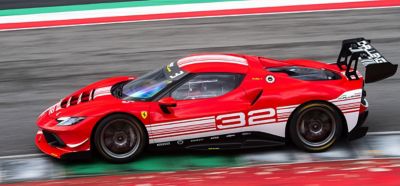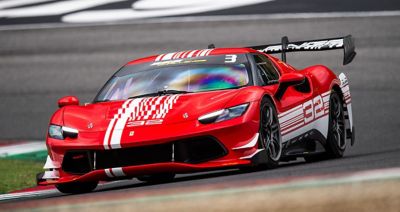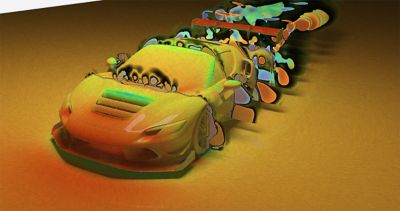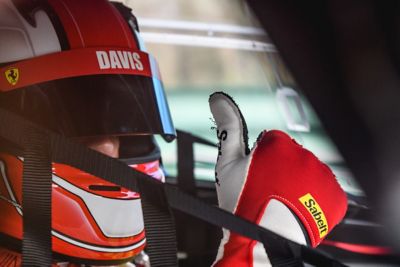-
-
학생용 무료 소프트웨어에 액세스하기
차세대 엔지니어에게 힘을 실어주는 Ansys
학생들은 세계적 수준의 시뮬레이션 소프트웨어를 무료로 이용할 수 있습니다.
-
지금 바로 Ansys에 연결하십시오!
미래를 설계하기
시뮬레이션이 다음 혁신을 어떻게 지원할 수 있는지 알아보려면 Ansys와 연결하십시오.
국가
무료 트라이얼
제품 및 서비스
학습하기
회사 정보
Back
제품 및 서비스
ANSYS BLOG
November 20, 2023
How Ferrari Aerodynamic Excellence Makes the World Dream
At the Ferrari Challenge Trofeo Pirelli, simulation sets the pace for outstanding on-track performance
October marks yet another historic moment in Ferrari history with the debut of the 296 Challenge, the ninth model to appear in the Ferrari Challenge Trofeo Pirelli. The event brings together Ferrari customers on four continents to compete in a series of sprint races organized by ability — from gentlemen racer to professional driver.
For this particular event, Ferrari is focused on designing a track-ready car that delivers an exciting, yet safe, race-day experience for everyone who takes the wheel, regardless of skill level. To do this, the Italian automotive manufacturer must find a compromise between peak performance and more predictable vehicle behavior that relies heavily on aerodynamics.

Every three years, Ferrari spends 12 months transforming a single production car model, limited by street laws and long-term reliability, into a track-ready, high-performance race car. Part of the Prancing Horse single-make series, the 296 Challenge car has undergone substantial modifications with the help of Ansys simulation software to maximize performance in a unique aero design.
Ferrari Maintains its Grip on Performance with Ansys Fluent
On raceways around the world, aerodynamics can mean the difference between first place champagne moments or passing the checkered flag with the middle of the pack.
Success in this context requires a careful consideration of downforce, an element of aerodynamics that can increase the speed of a race car during braking, cornering, and accelerating. As the air moves over various vehicle surfaces, downforce adds weight that pushes down on the vehicle and makes it more stable on the track.

Downforce is really helpful because it increases tire grip as well as handling while cornering to help maintain a higher speed. On a straightaway, not so much, as downforce creates drag that can slow a vehicle down. Consequently, translating these interactions into a winning vehicle design optimized for aerodynamics can be complicated.
To manage these on-track interactions and meet event-specific design requirements, Ferrari engineers used Ansys Fluent fluid simulation software to fine-tune the 296 Challenge’s big rear wing spoiler and many other auxiliary aerodynamic devices. The race car also needed a different radiator design layout to increase heat rejection efficiency (the ability of the radiator to reject heat) and an upsized power unit (engine) design validated by simulation.

Aerodynamic simulation of the 296 Challenge using the native multi-GPU Fluent solver colored by pressure, line integral convolution on car surfaces and x-vorticity on cross sections.
The 296 Challenge’s optimized aero package delivers 870 kgs of downforce at 250 km/h, which is unprecedented in its class. Its strategically angled spoiler, extreme braking system, and a custom tire design help the car maintain a strong grip on handling and performance in a streamlined design fine-tuned for aerodynamics, thanks to simulation.
Rear view of Ferrari 296 Challenge with animated cutplanes of velocity contours. Minimization of the recirculation and low-pressure area at the back of the car is critical to reduce aerodynamic drag and achieve maximum speed on the track.
Breakout Simulations that Run Eight Times the Speed of One
Up to this point, Ferrari has been running steady-state, low-fidelity simulations to sweep a large enough design space needed for optimization of a vehicle geometry that satisfies performance requirements. A team led by Matteo Aroni, senior application engineering manager at Ansys, saw an opportunity to speed this process, and decided to put Ansys Fluent’s native multi-GPU solver to the test to see by just how much.
Running his own tests against the new 296 Challenge vehicle design, Aroni discovered that with a multicore graphics processing unit (GPU) and impressive memory bandwidth, the solver makes shorter lead times possible.
Natively developed for GPU architectures, the multi-GPU Fluent solver unleashes unprecedented throughput, which enabled Aroni to run eight simulations of the 296 Challenge in the time it normally takes to run one.
Drilling down on this discovery a little further, a simulation taking more than 5 hours on 256 CPU cores can be run 40 minutes on eight NVIDIA A100 GPUs. For less time-bound tasks that do not need a throughput increase, the same throughput can be achieved, reducing hardware costs by 5X and energy consumption by 7X.

“Ferrari Challenge cars represent the pinnacle of racing performance for generations of commercial cars, and we are proud to help them engineer new aerodynamic designs that will lead to more victories on the track,” says Aroni. “Motorsport teams like Ferrari’s are always looking for performance advantages, and the Fluent native multi-GPU solver accelerates the solving process to give them that competitive edge. By answering design questions sooner, it can maximize production efficiency to support tight developmental timelines common to motorsport.”
Partnerships Drive Championships
Clearly, the magic happening behind the scenes that led Ferrari to extend its partnership with Ansys was fueled by more than software. While the multi-GPU Fluent solver was not used to develop the 296 Challenge, results from Aroni’s analyses of its design were enough to impress Ferrari — so much so that they have committed to using it to optimize future Ferrari Challenge vehicle designs.
“The addition of this solver to our computational fluid dynamics (CFD) workflow will have a tremendous impact on our aerodynamics designs in the future,” says Massimo Bendazzoli, Ferrari Challenge product technical manager. “This 8X productivity increase will empower us to achieve improved accuracy with more complex turbulence modeling and realize many more design variants than previously possible.”
Excitement is building here at Ansys about what’s next for Ferrari. Check out this recent blog for more information about Ansys’ Fluent’s native multi-GPU solver.
